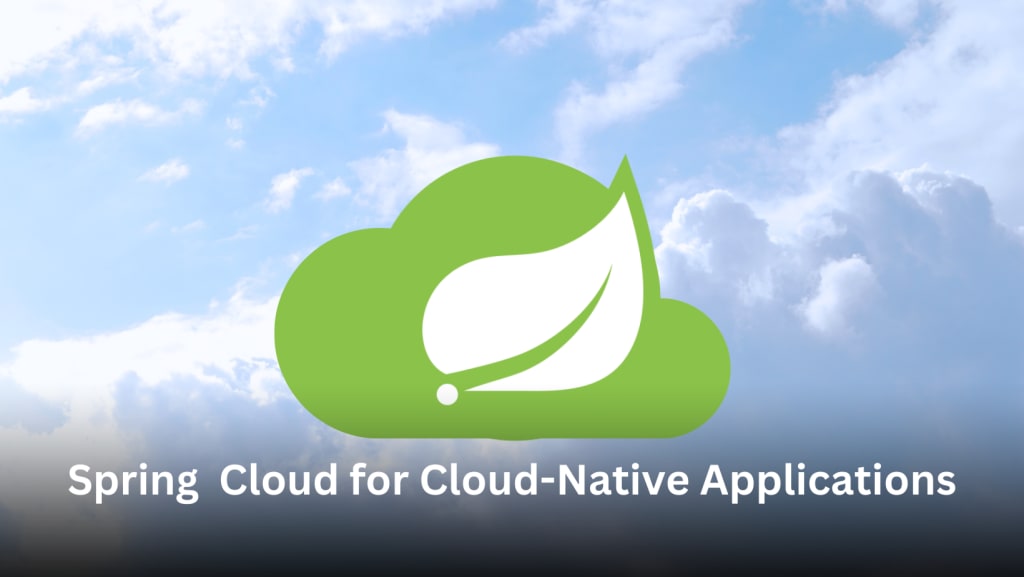Enhance your Existing Application with Cloud-Native Spring
Spring Cloud for cloud-native applications keeps the ability to deliver faster and more productive services to customers without any blockers affecting a faster environment.

Organizations are seen migrating their existing application to the cloud for making them more reliable, effective, and speedy with minimum costs. Spring Cloud has been effectively providing cloud services, and large companies have accepted it for developing next-generation cloud-native applications.
Most of you might have thought of an application that will help you in developing your business, but later, you got to know the cloud would be a great option. There is no need to worry about it; you can even migrate your traditional application to cloud-native.
By leveraging open source technologies in developing business applications, Spring Cloud is the best choice; it has some essential features to know, such as service identification, client-side load balancing, resiliency, tracing, and even contract to test, etc. There are many more things to know about cloud-native, but in this article, we will see some benefits of cloud-native applications and migrating traditional applications to cloud-native.
Features of Spring Cloud for Cloud-Native Applications
Spring cloud delivers an effective experience for cloud-native applications with its outstanding features.
Distributed/versioned configuration
Distributed configuration refers to external configuration. The properties of these applications are managed across the Spring environment.
Load Balancing
This feature makes equal balancing that helps the backend servers distribute equal network traffic and keeps them safe from overloading by single resources in the cluster.
Leadership election
The best thing about this feature is the leadership and coordination via the third party; this makes it possible for the applications to work together with others.
Global locks
While working with this feature, one thing you should keep in mind is that don't allow two threads to get access to the simultaneously with the same resources at the same time.
Service-to-service calls
This process is known where two communities make use of central services and service registry at the end of the call. For example, the spring microservice community connects with other dependent microservice.
Distributed messaging
Distributed messages and distributed configuration play an important role in delivering and queueing the messages to the subscribers. Some popular libraries like Kafka and RabbitMQ help in distributing messages.
Service registration and discovery
There is common service registration where all the microservice in the environment come together. This registration makes way for the clients in load balancing and provides service to the consumers without DNS.
Benefits of Developing Cloud-Native Applications
Every organization is planning to deliver a product to its customers faster and more effectively. These cloud-native applications will help you to avoid blockers in a faster environment.
Increase in productivity
With Spring Cloud, developers can quickly test and deploy new code to production using fully automated testing. This will help you to spend a few days putting your new ideas into productivity for the business.
Scalability and reliability
Due to built-in scalability and reliability, businesses can respond to any demanded profile without needing to plan or implement the extra infrastructure. It is achievable to scale other resources via on-demand flexible scaling or cloud bursting.
Cost-effective
Resources for computing and storage can be expanded as necessary. As a result, there is no need for excessive hardware loading or resource distribution. Cloud-native applications may be quickly set up and launched, and virtual servers can be added with ease for testing. Likewise, containers can execute many microservices, which is achievable on a host, reducing time, funds, and extra resources.
Easy-to-manage
Automation is used by cloud-native applications to roll out new features and upgrades. The experts can monitor all microservices and components. One team of engineers can concentrate on a single microservice without worrying about how it will communicate with other microservices because apps are broken down into smaller services.
Why Migrate to Cloud-native applications with Spring Cloud?
There is no doubt Spring is well-known for developing cloud-native applications. But the reason for its popularity is the Spring Cloud support and distributed microservice and Java community. Many vendors, such as AWS, Azure, and Spring Cloud Alibaba have implemented Spring cloud in their products.
The ecosystem of Spring is in the leading position with the popularity of Microservices. Most business enterprises have already migrated their monolithic applications to Spring boot Microservice. Therefore Spring ecosystem is continuously leading in the technologies. Now the question will be in your mind, will it continue to support?
It is quite obvious from the development perspective for cloud and cloud-native applications. Spring ecosystem is mainly known for being cost-effective. Therefore, it is highly suitable for your cloud-native projects. If you are planning for project development with spring cloud, then I would suggest you take a consultation with the experts on comparisons from different technologies. If you find Spring ecosystem well-suits your project, you can hire Spring boot developers from the best development company.
About the Creator
Vinod Vasava
Tech Expert, Content Writer for AI, ML, Springboot, Django, Python and Java






Comments
Vinod Vasava is not accepting comments at the moment
Want to show your support? Send them a one-off tip.